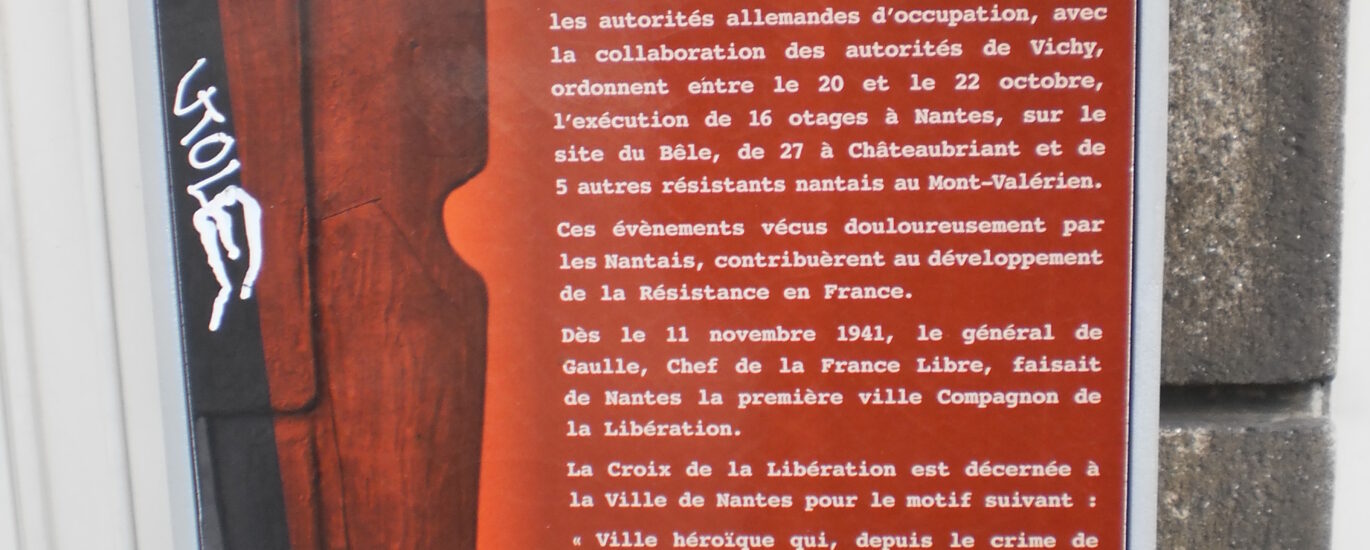The Plaque aux 27 otages is a solemn and poignant reminder of the dark days of World War II, located in France. This site commemorates the tragic event of October 1941 when 27 hostages were executed by the German occupying forces in retaliation for acts of resistance. The hostages, among them communists, trade unionists, and members of the French Resistance, were chosen to intimidate the occupied population and suppress further resistance activities.
This event is part of a broader pattern of harsh reprisals during the German occupation of France. The executions took place at Châteaubriant, a small town in the Loire-Atlantique department, and the memory of these individuals is preserved at the Plaque aux 27 otages. Among the executed was Guy Môquet, a young communist activist whose letters to his family became a symbol of resistance and sacrifice.
Over time, the site has evolved from a place of mourning to one of remembrance, reflecting France’s ongoing commitment to honor those who resisted oppression. It serves as a powerful reminder of the cost of war and the courage of those who stand against tyranny. The plaque is not just a memorial but a call to remember the past and learn from it, ensuring that such tragedies are never repeated.
The broader historical context of this event is tied to the Nazi policy of collective punishment against occupied populations, aiming to quell resistance movements. The executions were part of a series of retaliatory actions that took place across occupied Europe, illustrating the brutal methods employed by the Nazis to maintain control.
Visiting the Plaque aux 27 otages allows one to reflect on the resilience and bravery of individuals in the face of overwhelming odds, and the importance of remembering history to prevent future atrocities.






